#Hôtel des Invalides
Text

Hôtel des Invalides, Paris, France: The Hôtel des Invalides, commonly called Les Invalides, is a complex of buildings in the 7th arrondissement of Paris, France, containing museums and monuments, all relating to the military history of France, as well as a hospital and an Old Soldiers' retirement home, the building's original purpose. Wikipedia
73 notes
·
View notes
Text
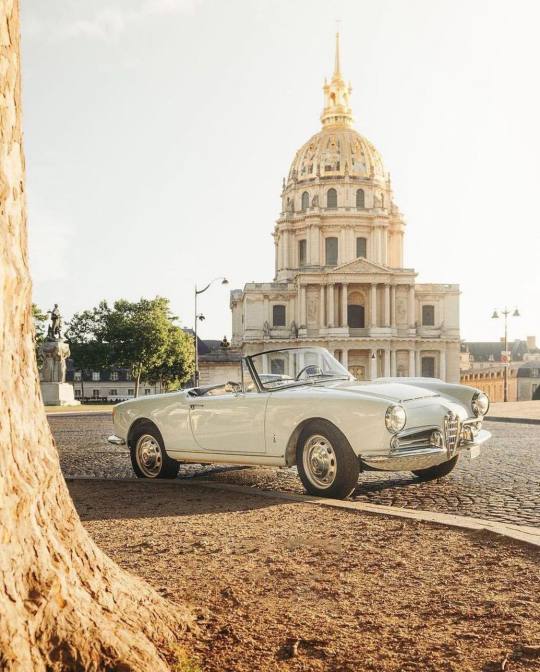
source Moto Vitelloni - Wheels n' wings.
23 notes
·
View notes
Photo

Le Drapeau Tricolore, octobre 2022
Napoleon Bonaparte, statue in the Cour d’honneur
Hôtel des Invalides, Paris, France
📷 by Sleepydrummer
#napoleon#napoleon bonaparte#hôtel des invalides#les invalides#musée de l'armée et invalides#architectural#historical#majestic#le drapeau tricolore#flags#2022#octobre#7th arrondissement#paris#france#sleepydrummer#📷 by Sleepydrummer
30 notes
·
View notes
Text
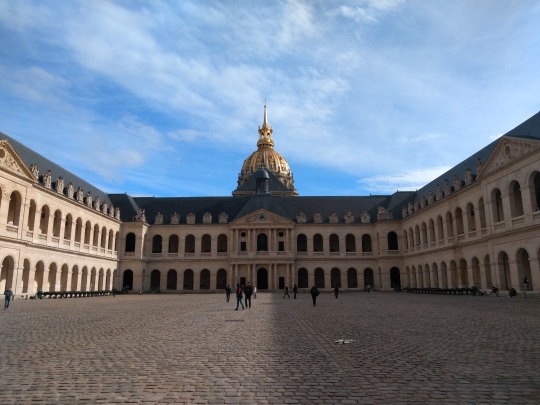

Hôtel des Invalides
Paris
#pretty#Hôtel des Invalides#Les Invalides#musée de l’Armée#army museum#Paris#France#museum#napoleonic era#napoleonic#first french empire#19th century#french empire#napoleon#napoleon bonaparte#history
7 notes
·
View notes
Text
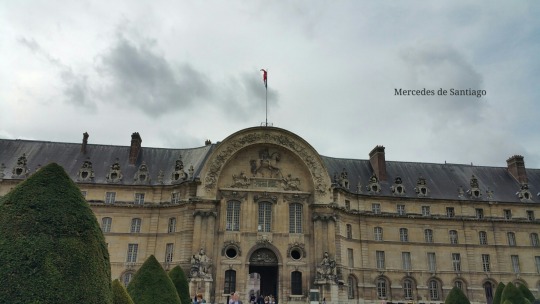
Hôtel des Invalides. París. Francia.
Photo on this post is my own.
0 notes
Text
Parijs | Wandeling langs de Parijse Landmarks
Parijs | Wandeling langs de Parijse Landmarks
Vrijdag, 26 mei 2017 | Vandaag is de tweede dag van ons bezoek aan Parijs. Het wordt een drukke dag. Vanuit ons hotel wandelen we langs de Seine en brengen een bezoek (aan de toen nog niet afgebrande) Notre-Dame.
Parijs | Langs de oevers van de Seine
Dat het behoorlijk druk is kun je zien aan de wachtrij op het plein voor de kerk. Wat moet je zeggen over de Notre-Dame? Het is een prachtige,…

View On WordPress
#2017#Cathédrale de Saint-Louis-des-Invalides#Dome des Invalides#Eiffeltoren#Forum Des Halles#Frankrijk#Hôtel des Invalides#Jos Saris#Louvre#Musée de l’Armée#Notre-Dame#Parijs#Place de la Concorde#Pont Alexandre III#Saint-Chapelle#Tuilerieën
0 notes
Photo

On this day 14 July 1789, during the French revolution, the people of Paris stormed the Bastille, a notorious prison, and a symbol of power and the old order. As a huge crowd attempted to gain access to the prison, the garrison station within started to fire cannons onto people in the streets, killing and wounding many. This caused outrage. Russian revolutionary, Peter Kropotkin, who wrote a groundbreaking grassroots history of the revolution, recounted what happened next: "As to the people, as soon as the news of the firing spread through the town, they acted without any one’s orders, guided by their revolutionary instinct. They dragged the cannon which they had taken from the Hôtel des Invalides to the Hôtel de Ville... "The firing by this time had been going on for more than three hours. The people, not in the least dismayed by the great number killed and wounded, were maintaining the siege by resorting to various expedients. One of these was the bringing up of two cartloads of straw, to which they set fire, using the smoke as a screen to facilitate their attack on the two entrances, the greater and lesser drawbridges. The buildings of the Government Court were already in flames. "The cannon arrived just at the moment they were wanted. They were drawn into the Government Court and planted in front of the drawbridges and gates at a distance of only 90 feet. It is easy to imagine the effect that these cannon in the hands of the people must have produced on the besieged. It was evident that the drawbridges must soon go down, and that the gates would be burst open. The mob became still more threatening and was continually increasing in numbers. "The moment soon came when the defenders realised that to resist any longer was to doom themselves to certain destruction." You can get a new edition of Kropotkin's history here: https://shop.workingclasshistory.com/products/the-great-french-revolution-1789-1793-peter-kropotkin Pic: Painting of the events by Jean-Pierre Houël https://www.facebook.com/photo.php?fbid=661706862669199&set=a.602588028581083&type=3
139 notes
·
View notes
Text
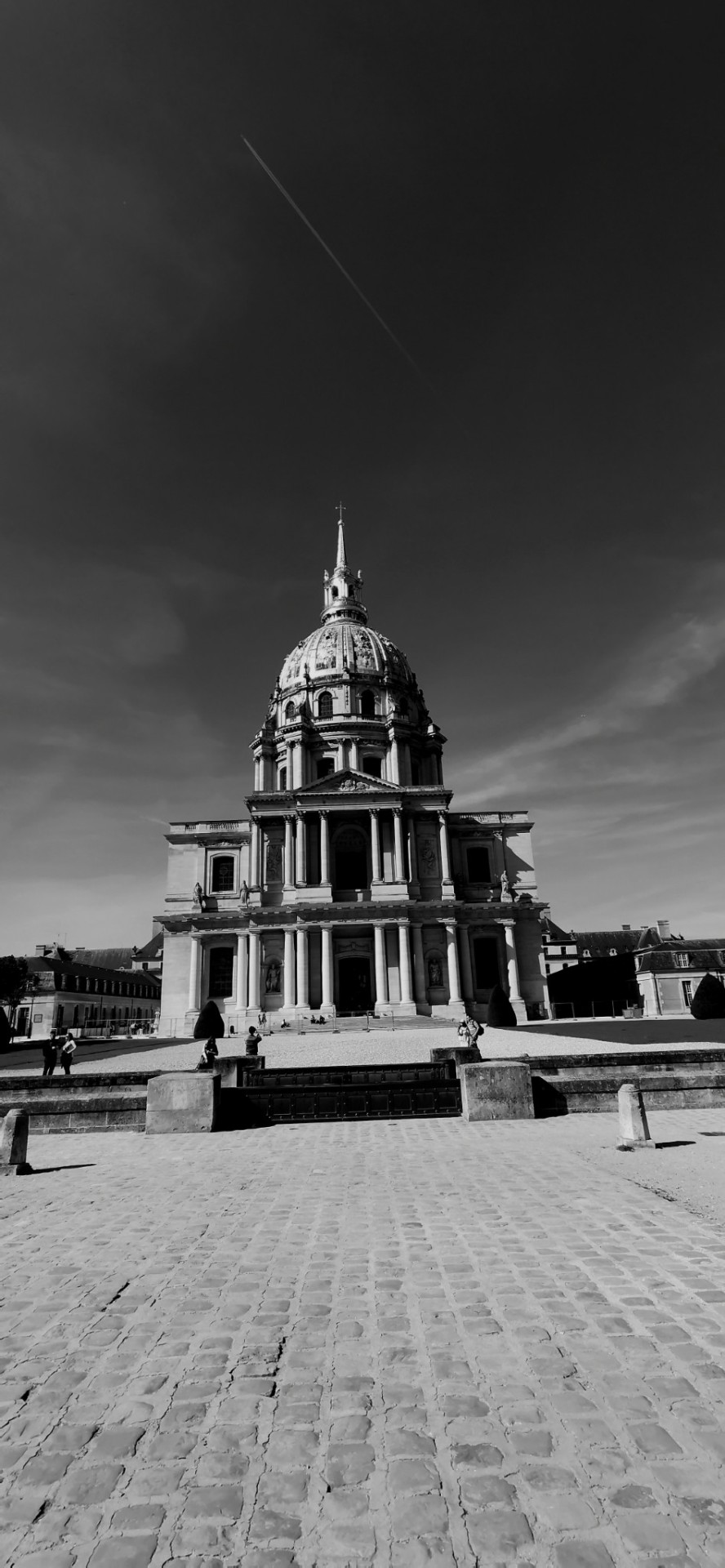


The most ambitious project under Louis XIV after Versailles, the Hôtel des Invalides was designed to house reformed soldiers. Today it houses no less than 4 museums and the tomb of Napoleon I.
55 notes
·
View notes
Text



Grand Duke Henri and Grand Duchess Maria-Teresa of Luxembourg and Prince Albert II of Monaco attend a national tribute paid by the Republic of France to Admiral Philippe de Gaulle. at the Hôtel des Invalides in Paris. They were accompanied by French President Emmanuel Macron | March 20, 2024
15 notes
·
View notes
Text




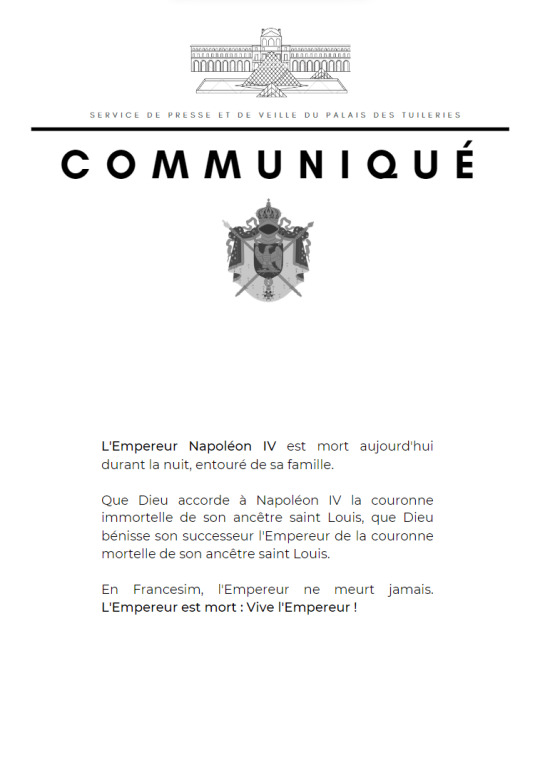
Official statement from the Tuileries Palace
The Emperor Napoléon IV died today during the night, surrounded by his family.
May God grant Napoléon IV the immortal crown of his ancestor Saint Louis, may God bless his successor the Emperor with the mortal crown of his ancestor Saint Louis.
In Francesim, the Emperor never dies.
The Emperor is dead: Long live the Emperor!
The Tuileries Palace will soon communicate the dates and details of the funeral of His Majesty the Emperor Napoleon IV. It will take place at the Hôtel des Invalides in Paris, the necropolis of the Simparte family.
Le Palais des Tuileries communiquera bientôt les dates et les détails des funérailles de Sa Majesté l'Empereur Napoléon IV. Elles se dérouleront à l'hôtel des Invalides à Paris, nécropole de la famille Simparte.
#simparte#communiqué#ts4#ts4 royal#royal simblr#sims 4 royal#sims 4 fr#funeralNapoléonIV#tuileries#paris#tour eiffel#royal sims#sims 4 royalty#sims royalty
88 notes
·
View notes
Text
1789-Storming of the Bastille
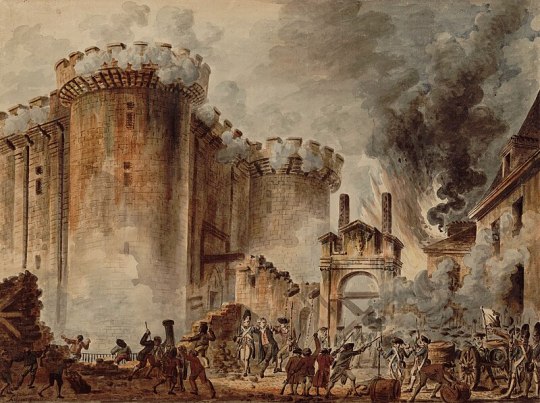
Storming of the Bastille in Paris. This event escalates the widespread discontent into the French Revolution.[8]Bastille Day is still celebrated annually in France.

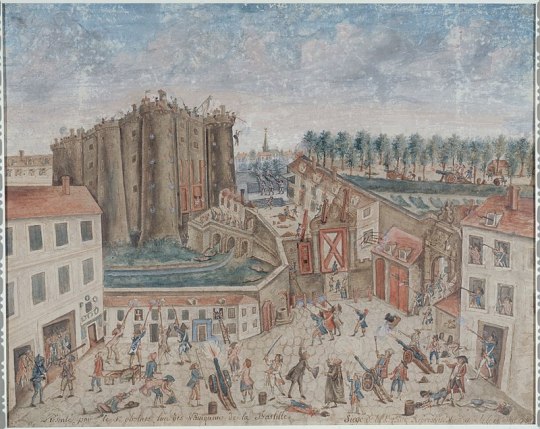
The Storming of the Bastille (French: Prise de la Bastille[pʁiz də la bastij]) occurred in Paris, France, on 14 July 1789, when revolutionary insurgents stormed and seized control of the medieval armoury, fortress and political prison known as the Bastille. The Bastille then represented royal authority in the centre of Paris. The prison contained only seven inmates at the time of its storming but was seen by the revolutionaries as a symbol of the monarchy's abuse of power. Its fall was the flashpoint of the French Revolution.
*One of the early victims of the French Revolution.
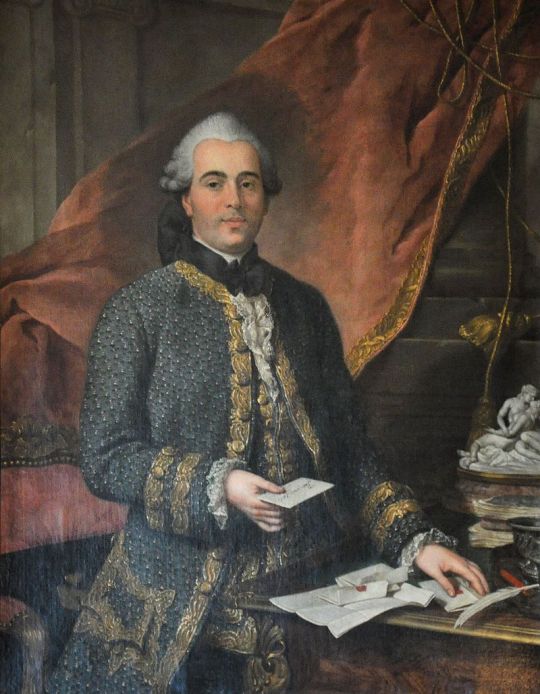
Jacques de Flesselles (French pronunciation: [ʒak də flɛsɛl]; 11 November 1730 – 14 July 1789) was a French official. On 13 July 1789, de Flesselles received demands for weapons to equip a citizens' militia being organized to restore order. He was able to provide only three muskets from municipal stocks, and his suggestions of where other stores could be found proved misleading or mistaken.[2] Immediately following the storming of the Bastille on 14 July, de Flesselles found himself accused of royalist sympathies by an infuriated throng surrounding the Paris City Hall. De Flesselles was shot dead by an unknown hand on the steps of the City Hall, while trying to justify his actions, and his body decapitated. De Flesselles was one of several representatives of the ancien régime killed that day.

Bernard-René Jourdan de Launay (8/9 April 1740 – 14 July 1789) was the French governor of the Bastille. He was the son of a previous governor, and commander of the Bastille's garrison when the prison-fortress in Paris was stormed on 14 July 1789.
The permanent garrison of the Bastille, under de Launay, consisted of about 82 invalides (veteran military pensioners) no longer considered suitable for regular army service. Two days before 14 July they were reinforced by 32 Swiss grenadiers from the Salis-Samade Regiment. Unlike Sombreuil, the governor of Hôtel des Invalides, who had accepted the revolutionaries' demands earlier that day, de Launay refused to surrender the prison fortress and hand over the arms and the gunpowder stored in the cellars.[4] He promised that he would not fire unless attacked, and he tried to negotiate with two delegates from the Hôtel de Ville, but the discussions drew out. Part of the impatient crowd started to enter the outer courtyard of the fortress after a small group had broken the chains securing the drawbridge.

After shouting warnings, the garrison opened fire.[4][5][6][7][8][9] The besiegers interpreted thar as treachery on the part of de Launay.[6][7][8][9] The ensuing fighting lasted about four hours and resulted in about 100 casualties among the exposed crowd but only one death and three wounded[10] amongst the well-protected defenders firing from loopholes and battlements. With no source of water and only limited food supplies within the Bastille, de Launay decided to capitulate on the condition that nobody from within the fortress would be harmed. De Launay was then seized, and his sword and baton of rank were torn from him. He was supposed to have been taken to the Hôtel de Ville by one of the leaders of the insurrection, the soldier Pierre-Augustin Hulin, a future general. However, on the way there, the furious crowd assaulted the governor, beat him and eventually killed him by stabbing him repeatedly with their knives, swords and bayonets and shooting him once. The actual killing was reported to have taken place near the Hôtel de Ville when the struggling de Launay, desperate and abused, cried out "Enough! Let me die" and kicked an unemployed cook named Desnot in the groin. After he had been killed, Launay's head was sawn off by Mathieu Jouve Jourdan, a butcher. It was fixed on a pike, carried through the streets for some hours and thrown into the Seine the next day.


#Jul.14.1789#Storming of the Bastille#Bastille Day#French Revolution#date of death#Jacques de Flesselles#Bernard-René Jourdan de Launay#history today
29 notes
·
View notes
Text
Le Constitutionnel, May 6, 1847
The anniversary mass that is celebrated every year at the Invalides, since the Emperor’s remains were laid to rest there, attracted a crowd even greater than usual this year. It was known that there would be laid to rest, in the vaults reserved for them to the right and left of the entrance to the imperial tomb, the remains of the grand marshals of the palace, Duroc and Bertrand. We wrote the day before yesterday of the arrival in Paris of the body of General Bertrand, and the modest reception--too modest perhaps--that took place, for which no one even ordered a squadron of troops. The situation remained the same today; not a soldier in the army was called upon to bear arms to render a final tribute to the remains of such great military exemplars. A squadron of invalids, armed with pikes with the funeral flame, alone performed the duty; but all the able-bodied men belonging to the hôtel had hastened to surround the two catafalques. On the one of the left were the remains of Duroc; on the one on the right, those of Bertrand. The son of the latter was placed on that side; the relatives of Marshal Duroc, on the other side.
Around them pressed a crowd comprised of officers of every rank, men of every station, who adhered to the cult of imperial memory. There could be seen Generals Gourgaud, Fabvier, Pailloux, the marquis de Cramayel, the count de Rambuteau, the duke of Padua, the duke of Vicenza, MM. de Tracy and de Beaumont (Somme), M. de Ségur, Colonel Chapuis, surrounded by officers from the 4th legion of the National Guard.
In the upper galleries were ladies in great numbers, and among them the princess Mathilde, niece of the emperor, and ladies belonging to the families of the two marshals of the palace.
After the mass, which was celebrated with the accompaniment of military music, the two coffins were lowered into the vaults designated to receive them and above which had been engraved the names of Duroc and Bertrand. Duroc, who was the first to be interred, was placed in the vault to the left of the entrance to the imperial sepulcher, and Bertrand in the vault to the right. When the body of the Emperor has been placed in the tomb, Duroc will be found on his right and Bertrand on his left. The two coffins were carried into the vaults about a meter deep by non-commissioned officers.
General Fabvier gave this brief oration at the moment when the remains of Duroc were placed in the vault:
“Gentlemen, it is not beneath these vaults that shelter so many valiant defenders of France that I come to speak to you of the services, wounds, and brilliant actions of Duroc. Like them, he was intrepid, devoted, disinterested, modest. I will say to you just one thing; it will suffice for his glory: Napoleon, disarmed by those he wished to defend, intended to return to private life; he asked to end his career under the name of Colonel Duroc. Such was the magnificent, imperishable monument that Napoleon’s tender heart raised to Duroc’s memory, to his own.
Dear and venerable veterans, when you go to find your leader, tell him that his glory increases and grows more refined every day; that this very ceremony is a tribute we pay to his loving heart in bringing nearer to him two faithful friends.”
Marshal Oudinot, despite his eighty years and twenty-eight wounds, came down from his rooms, supported by his friends, to cast the holy water over the coffins of his old companions in arms.
27 notes
·
View notes
Text
Anonymous asked: Do the French commemorate Remembrance Day and wear the red poppy to commemorate the dead?
Yes, of course they do. It’s called Armistice Day - and it’s 11 November. As time went on, the day came to mark the victims of all wars and several countries changed the name – in the UK it is now Remembrance Day and in the US it is Veterans Day – but France has stuck with Armistice Day.
The Great War officially ended with the signing of the Treaty of Versailles on June 28, 1919. But 11 November is chosen because it commemorates the signing of the armistice between Germany and the Allies that led to the ceasefire and finally put an end to World War I in 1918 - which took place at the 11th hour of the 11th day of the 11th month in 1918.
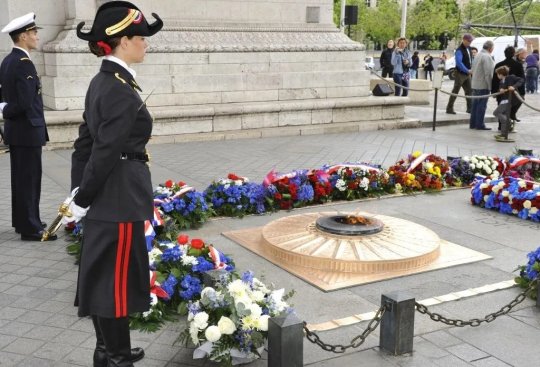
It’s a national holiday and also a time to remember the war dead. There are memorial services all over France. All municipalities, regardless of their size, have a commemorative ceremony. A wreath of blue-white-red flowers is placed on each War Memorial, which is located either on the town’s square or by the church.
The President of the Republic presides over the Parisian comemoration and lays a wreath on the Tomb of the Unknown Soldier under the Arc de Triomphe at 11am. Two consecutive minutes of silence are observed at 11am local time. The first minute is dedicated to the nearly 20 millions people who lost their life during World War One. The second pays tribute to the living left behind, the mourning mothers, wives, brides to be and sisters. It’s quite a solemn and moving ocassion.

The red poppy, synonymous with Remembrance Day in the UK, is not used however. Instead the symbol of remembrance in France is the bleuet, or cornflower.
Although it is reported that France showed solidarity with the USA in 1920 (and again, with other World War One Allies, in 1921) by wearing the Remembrance Poppy, it is the cornflower (le bleuet) which was eventually adopted as the country’s memorial flower.
The young French army recruits, who arrived at the Front from 1915 onwards, were called “les bleuets” – because of the new blue version of jackets. Thus, there was a personal French connection with the dainty blue flower - that also grew profusely on the battlefields, with the poppy. It would make sense for the French to choose the bleuet because cornflowers have traditionally symbolised “pure and delicate” sentiments.

As with the Madame Guérin’s Poppy Day idea, as an emblem of remembrance and to help victims of war, French women were behind the idea of the cornflower / le bleuet as the memorial emblem of France. They were Suzanne Lenhardt and Charlotte Malleterre. It’s more than likely that Madame Guérin knew about le Bleuet, given it was begun in Paris in 1915, when she came up with her own red poppy idea.
Suzanne Lenhardt was a nurse and her husband had been killed on the Massiges battlefield, in the Marne. Charlotte Malleterre was daughter of General Niox - who was Commander-in-Chief of the hospital ‘Hôtel des Invalides’.
The two women arranged for the maimed French veterans (“les gueules cassées”) of the ‘Hôtel des Invalides’ to make the bleuets as an aid to their rehabilitation and as a means of earning money of their own. Such an occupation was the only thing many could have coped with. As Madame Guérin, and her one-time French co-lecturer Robert Arbour, used to state whilst fundraising for these men – such men did not receive a pension when they were medically discharged.
The soldiers would craft the petals from fabric and stamens from newspapers. In the beginning, les bleuets were only sold locally, in Paris, and not on a national scale. But that has changed in recent years as it is available nationally now.
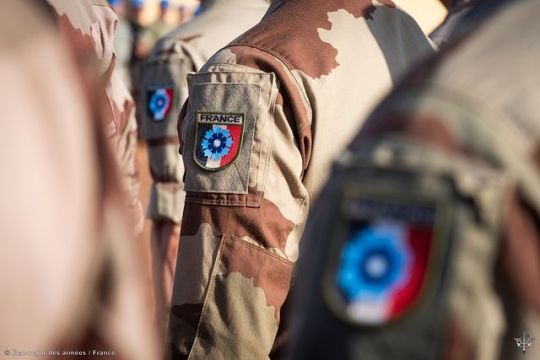
The bleuet campaign is run on behalf of the Office National des Anciens Combattants et Victimes de Guerre and supports families of servicepeople or police officers who died or were injured in service, as well as victims of terrorism. Profits from bleuet sales go to veterans’ charities. However the flower is less ubiquitous in France than the poppy is in Britain. Why that is, I don’t know. But you do see more people wearing it as the years have increasingly passed.
Alongside my poppy, I wear it as a mark of respect for my French partner’s family, but also for the country I currently make my home. It’s also a way to honour the war dead of France who sacrificed their lives for their homeland and our freedom.
Thanks for your question.
#ask#question#remembrance day#armistice day#11 november#poppy#bleuet#cornflower#war#first world war#france#memorial#commemoration#europe
54 notes
·
View notes
Text
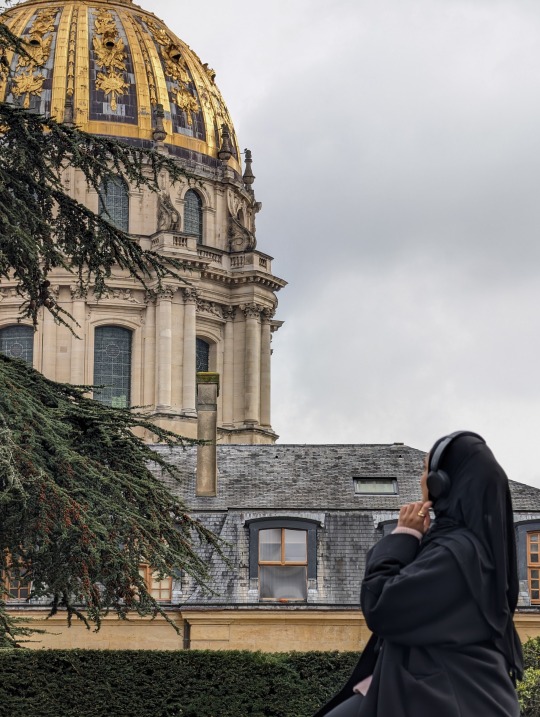
3 years later and I have decided to log onto my Tumblr... much has changed so first things first - jazzing up my profile! A bit less pink (still love pink) and a bit more neutral 🤍
Posting my first pic in 3 years, of me sat beside the Hôtel des Invalides in Paris. Great shot captured by my cousin, not me! But I can't take pictures of myself, so this is an exception. 😁
📍Paris, France, Hôtel des Invalides 03/03/2024
#france#paris#photography#paris france#paris fashion week#getaway#weekendtrip#weekend#weekend away#gold#architecture#buildings#living
3 notes
·
View notes
Text
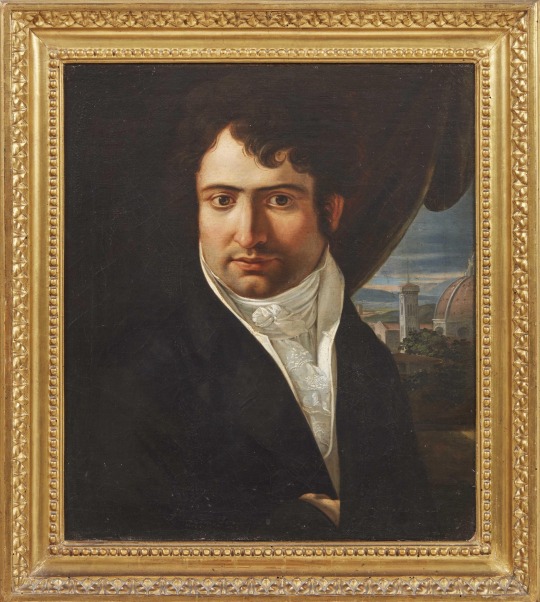
Jérôme all grown up during his Italy years
Portrait of Girolamo Bonaparte, by Pietro Benvenuti
The last of Napoleon’s brothers, born in [1784], Girolamo was a carefree and frivolous young man, often lacking prudence and moderation, who led a life of entertainment. In 1807 he married Catherine, daughter of King Frederick I of Württemberg, and was made king of Westphalia by his brother. After the fall of Napoleon, he left France to reside first in Vienna then in Trieste, Rome and Porto San Giorgio in the Marche. A widower since 1835, in 1840 he secretly married an Italian noblewoman, Giustina Pecori-Suárez (1811–1903), in Florence. Returning to Paris in 1848, he was appointed governor general of the Hôtel des Invalides, then Marshal of France in 1850, president of the Senate in 1851 and was reinstated with the title and honors of Imperial Prince in 1852. He died in 1860; his tomb is located in the cathedral of Saint Louis des Invalides next to Napoleon’s large sarcophagus.
(Source)
#I’m Jerome’s biggest defender#Pietro Benvenuti#Benvenuti#Jerome Bonaparte#Jérôme Bonaparte#Napoleon’s brothers#Napoleon’s family#Girolamo Bonaparte#pandolfini#Palazzo Ramirez-Montalvo#Firenze#Florence#art#Jerome#napoleonic era#napoleonic#first french empire#french empire#painting#portrait#cravat#1800s#19th century#auction#nell’asta Dal Rinascimento al primo ‘900 del 2 febbraio 2021
12 notes
·
View notes
Text
Météore... au logis !
Mon ''pote'' Alain Rémond, chroniqueur à La Croix, m'ayant indiqué qu'il y avait une grève à la Météo, j'ai voulu vérifier, avec l'aide de ''Google'' (qui, comme Dieu tel qu'on le définissait dans ma jeunesse, ''sait tout, voit tout, entend tout''), les conséquences de l'inconséquence de ces Ponctionnaires, dont le salaire ne dépend que de la capacité que s'est octroyé l'Etat, ce monstre anthropophage, de... ponctionner (d'une manière que la morale réprouve et que l'économie a démontré perverse) mes revenus et mes ''biens'' –devenus autant de ''maux'', par sa faute...
Car enfin, imaginez que la dite météo se mette à s''estimer vexée d'être ainsi traitée par le mépris et l'abandon de poste en présence de l'ennemi... on pourrait avoir des ennuis. En effet, en ce moment, à part mon cher Midi... le temps n'est vraiment pas au beau fixe, en Macronie : il pleut, et en même temps, il pleut ! (NB : le ''quoi qu'il en coûte n'est pas loin, et nos primes d'assurances vont faire de jolies pirouettes !). Seul avantage : ''les ceusses'' qui ont avalé les bobards du Giec et de Greta Thunberg mélangés commencent à croire ce que leur disaient les gens posés et qui réfléchissaient au lieu de fléchir …). Vous me direz que, grâce à Hollande puis à Macron, on sait désormais comment guérir facilement les suites éventuelles d'un problème aussi soudain et suraigu qu'insoluble : on organise une marche blanche, précédée et suivie de dépôts de fleurs... et, si le mal persiste, on ajoute à ça un discours vibrant et creux du Président dans la cour des Invalides. Là n'est donc pas le sujet...
Ce qui vous vaut l'éditorial de ce jour (car... ''Vous le valez bien !'', disait, paraît-il, Coco Chanel), c'est que lorsque j'ai eu ''ouvert'' Google à la rubrique ''Grève météo'', j'ai lu, à ma très grande surprise : ''Ephéméride du 13 novembre à Greve. Météo : 5° le matin, 6° l'après-midi. Temps couvert, pluie en soirée. Soleil : lever à 07h41, coucher à 16h21. Nouvelle lune''. C'est tout. Vous imaginez ma tête ! C'est quoi, ce truc ? Il existerait une météo de la grève, ou vice-versa, et personne ne m'avait rien dit ? Si ça continue, je vais me mettre en grève, comme la météo... C'est encore un coup des complotistes, ça... A moins que ce ne soit de l'extrême droite... ou peut-être de Poutine : celui-là, il est capable de tout !
Curieux de nature, j'ai voulu en savoir plus, et j'ai, illico-presto, tapé ''Grève'' sur mon navigateur (j'ai choisi Google, comme tout le monde ou presque. Il n'accepte donc pas les accents). Et là... Eureka : en quelques secondes, j'ai tout compris ! Greve (sans accent, donc) est une ville danoise, située au sud de Copenhague (une des nombreuses villes que j'adore... en été), dans la très belle île de Sjælland, (qui est devenue, précise utilement la notice, ''une zône résidentielle, dans les années '60'', ce qui m'a vraiment intéressé : je vais pouvoir coller ça dans tous les ''dîners-en-ville'' de la quinzaine !).
Je croyais en avoir fini avec cette histoire, lorsque Google a jugé utile de préciser, à ma seule intention, j'espère, que Greve est jumelée avec la célèbre commune de Greve-in-Chianti'', seule Greve connue qui pétille. Celle-là est en Italie, dans les environs immédiats de Florence... ce qui m'a aussitôt remis en mémoire les délices de ces soirées d'été en Toscane, qui n'en finissent pas de ne pas finir, sur la terrasse du merveilleux ''hôtel de charme'' baptisé ''i Rondini'' (= les hirondelles, parce que ceux qui y ont été une fois, dit la patronne, y reviennent chaque année tant il est inoubliable). La météo, à Greve est aussi facile que de faire la grève pour la météo : à 85 %, c'est ''beau temps ensoleillé, température douce, ciel dégagé''... et Florence à vos pieds...
Ainsi ai-je connu, grâce à ou malgré la grève de la météo, la météo de Greve –dont j'ignorais jusqu'à l'existence--, et l'existence de Greve --dont je prévois la météo... Deux greves pour le prix d'une. Mais là... nouveau drame : j'ai complètement oublié pourquoi j'étais à Greve, d'abord, puis à Greve, ensuite, et pourquoi je m’intéressais à la météo... Un moment plus tard (on a l'âge de son millésime de naissance !), je me suis souvenu que la raison en était ce qui se passe ici, chez nous, en France… ''et en même temps'', en grève (décidément, je ne m'en sors pas !).
En atterrissant après ces deux courtes incursions dans des Greves que j'ai tangentées et aimées (par météo clémente et alors qu'aucune des deux n'était en... grève !), je me suis dit qu'il devait effectivement exister des liens très forts entre la grève et la météo : apparemment, la grève de la nôtre (de météo) n'est pas sans conséquences sur elle (la météo, pas la grève) : le pays coule littéralement sous des cataractes qui le transforment en marécages quand ce n'est pas en polders et les nappes phréatiques débordent à en inonder plaines et vallées... Ça, Madame, c'est du bon et du vrai réchauffement climatique, la sécheresse en prime ! Ces idiots ne savant même pas que la masse totale de l'eau sur la Terre est une constante …
Alors, plutôt que d'invoquer le réchauffement et la sécheresse, comme le font sans cesse tous les perroquets de fin du monde qui ne rêvent que d'affoler les populations et les braves gens, de façon à augmenter les impôts pour pouvoir subventionner ainsi tout ce que la planète peut compter d'institutions douteuses aux intentions catastrophiques (habituées des ''prophéties auto-réalisées''), pensons à nos pauvres concitoyens du Nord, du Pas-de-Calais ou des Vosges, ce soir, qui sont tellement à plaindre dans leurs villages ravagés... comme par une guerre... Eux, ils ne pensent pas une seconde à se mettre en grève. Tiens ! Ça me donne une idée : on devrait penser à organiser des marches blanches contre la grève de la météo : il paraît que, en hollando-macronie, ça résout tous les problèmes...
H-Cl.
5 notes
·
View notes